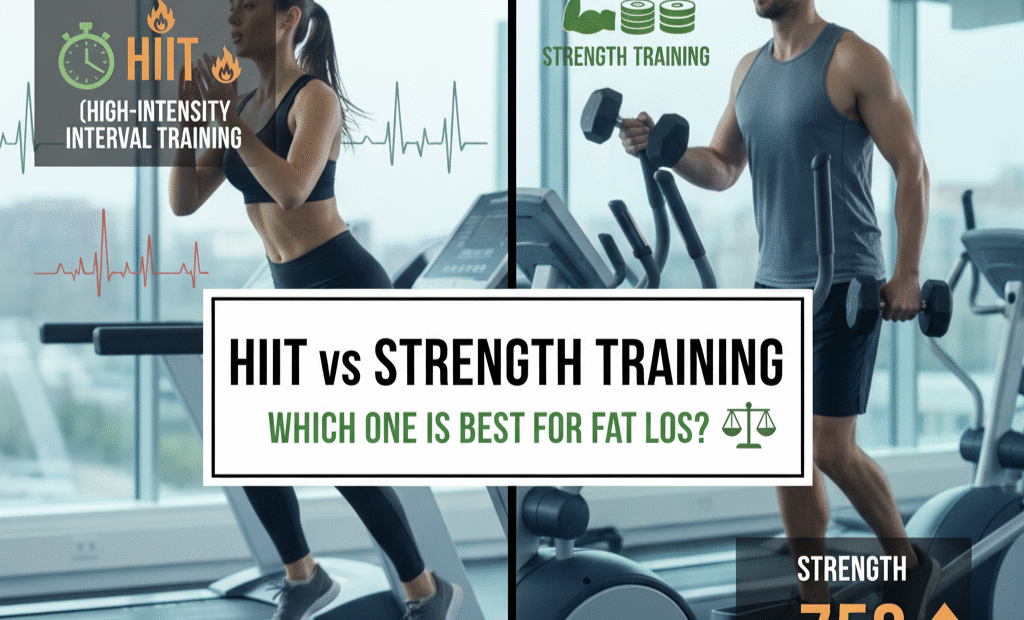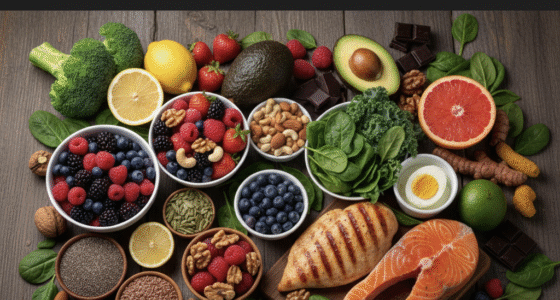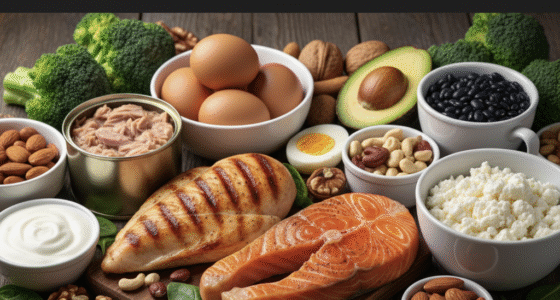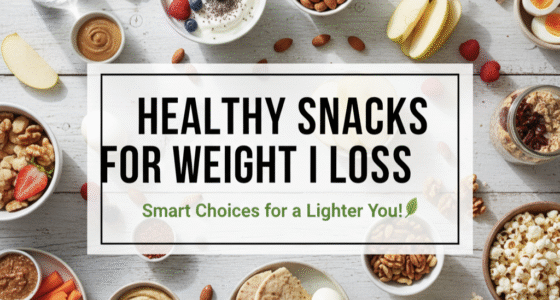When it comes to burning fat and achieving sustainable weight loss, fitness enthusiasts often face one major question: Should I focus on HIIT (High-Intensity Interval Training) or Strength Training? Both are powerful workout methods, but they work in different ways and produce unique results. In this guide, we’ll break down the science, compare the benefits, and help you decide which one is best for fat loss in 2025.
What is HIIT?
HIIT (High-Intensity Interval Training) is a workout style that alternates between short bursts of intense activity and brief rest or low-intensity exercise. A typical HIIT workout lasts 15–30 minutes but can burn a significant number of calories in a short time.
- Example: 30 seconds of sprinting followed by 30 seconds of walking, repeated for 20 minutes.
- Focus: Cardiovascular endurance and calorie burn.
- Best for: People with limited time who want quick results.
What is Strength Training?
Strength training involves lifting weights or using resistance to build muscle mass, strength, and endurance. Unlike HIIT, it doesn’t always feel like an intense cardio workout, but it offers powerful fat-loss benefits by boosting your metabolism over time.
- Example: Squats, deadlifts, bench presses, and pull-ups with weights.
- Focus: Building muscle and increasing metabolism.
- Best for: Long-term fat loss and muscle definition.
HIIT vs Strength Training: The Science of Fat Loss
1. Calorie Burn During Exercise
HIIT burns more calories in a short time. A 20-minute HIIT workout can burn as many calories as a 45-minute moderate-intensity workout. Strength training burns fewer calories during the workout but creates long-term benefits.
2. Afterburn Effect (EPOC)
HIIT creates a strong afterburn effect, also known as Excess Post-Exercise Oxygen Consumption (EPOC). This means your body continues burning calories for hours after your workout. Strength training also causes EPOC, especially with heavy lifts, but HIIT is generally more effective for short-term calorie burn.
3. Muscle Preservation
Strength training is better for preserving and building muscle mass. Since muscle burns more calories at rest, having more lean muscle increases your daily calorie expenditure, which supports long-term fat loss.
4. Metabolism Boost
HIIT temporarily boosts metabolism due to intense exertion. Strength training, however, creates a permanent boost by increasing lean body mass.
Benefits of HIIT for Fat Loss
- Efficient calorie burn in less time.
- Improves cardiovascular health.
- No equipment required (bodyweight exercises work).
- Variety keeps workouts fun and engaging.
Benefits of Strength Training for Fat Loss
- Builds lean muscle mass that burns fat long-term.
- Tones and sculpts the body.
- Improves bone density and joint health.
- Supports long-term sustainable fat loss.
Which One is Best for Fat Loss?
If your goal is fast calorie burn, then HIIT gives quicker short-term results. But for sustainable long-term fat loss, strength training is more effective because muscle mass helps you burn calories even at rest. The truth is—the best fat-loss strategy combines both methods.
How to Combine HIIT and Strength Training
For maximum fat loss, experts recommend a hybrid approach:
- 3 days of strength training – Focus on compound lifts (squats, deadlifts, bench presses, rows).
- 2 days of HIIT – Sprint intervals, cycling, jump rope, or bodyweight circuits.
- 2 rest/recovery days – Yoga, stretching, or light activity.
Sample Weekly Fat Loss Workout Plan
- Monday: Strength Training (Full Body)
- Tuesday: HIIT (20 minutes, sprints + bodyweight)
- Wednesday: Strength Training (Upper Body)
- Thursday: Active Rest (Yoga or Walking)
- Friday: Strength Training (Lower Body)
- Saturday: HIIT (Cycling or Jump Rope)
- Sunday: Rest & Recovery
Nutrition Matters for Fat Loss
Neither HIIT nor Strength Training will maximize fat loss without proper nutrition. Focus on:
- High-protein meals: Chicken, fish, tofu, eggs, beans.
- Healthy fats: Avocado, nuts, olive oil.
- Complex carbs: Brown rice, quinoa, oats, sweet potatoes.
- Hydration: At least 8 glasses of water daily.
Common Mistakes to Avoid
- Overtraining with HIIT (leads to burnout).
- Neglecting strength training (slows long-term fat loss).
- Ignoring nutrition (workouts alone aren’t enough).
- Not resting enough (recovery is essential for progress).
Conclusion
So, HIIT vs Strength Training – which one is best for fat loss? The answer is both. HIIT burns calories quickly and improves endurance, while strength training builds muscle and boosts long-term metabolism. For best results in 2025, combine both methods with a balanced diet and consistency. This way, you’ll burn fat faster, stay leaner, and maintain results long-term.









